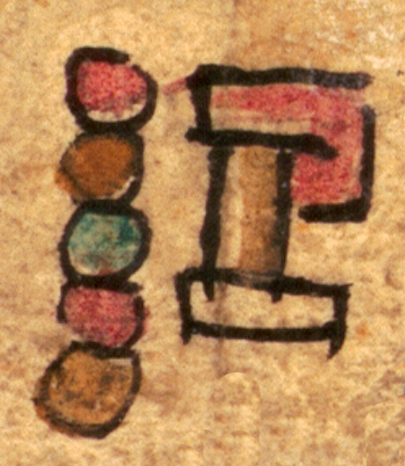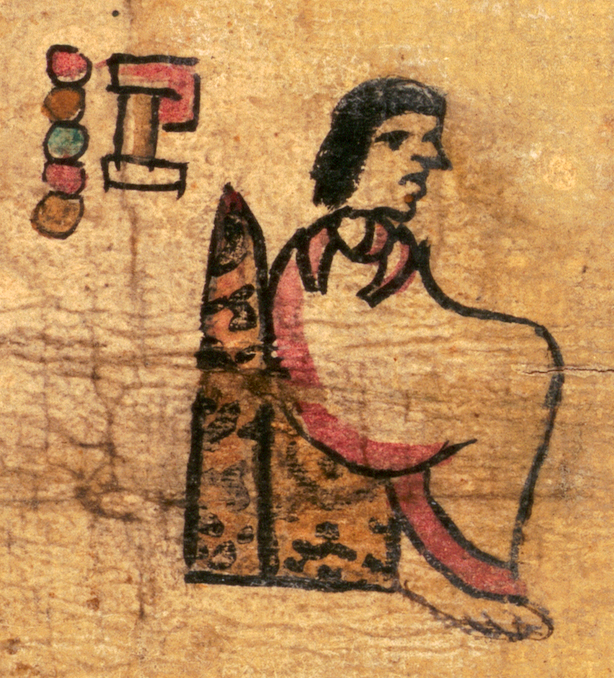Macuilli Calli (CQ)
This combined simplex glyph-notation for a date that was given as a personal name consists of a row of five (macuilli) small circles (colored red, turquoise blue, and a yellowish-brown), arranged in a vertical row, to the left of the half of a house or building (calli). The building has a red roof and a brown wooden beam holding it up. Its foundation is a horizontal white platform.
Stephanie Wood
The arrangement of five ones here is somewhat different from some other renditions of the same number, as can be seen below. If it is not random, the way they are colored may have a pattern (red, brown, blue, and starting again). The context image shows that the man with this name, Macuilli Calli (Five House, 5-House), sits on a jaguar-skin covered icpalli (an Indigenous seat of authority or throne). He also wears a cape or cloak (tilmatli) tied over one shoulder. These are indicators that he was an elite Nahua male.
Stephanie Wood
covers ruling men and women of Tecamachalco through 1593
Randall Rodríguez
five, cinco, house, casa, building, edificio, numbers, numeros, names, nombres, dates, fechas

macuil(li), five, https://nahuatl.wired-humanities.org/content/macuilli
cal(li), house or building, https://nahuatl.wired-humanities.org/content/calli
icpal(li), important seat or throne, https://nahuatl.wired-humanities.org/content/icpalli
Cinco Casa, 5-Casa
The Codex Quetzalecatzin, aka Mapa de Ecatepec-Huitziltepec, Codex Ehecatepec-Huitziltepec, or Charles Ratton Codex. Library of Congress. https://www.loc.gov/item/2017590521/
The Library of Congress, current custodian of this pictorial Mexican manuscript, hosts a digital version online. It is not copyright protected.




